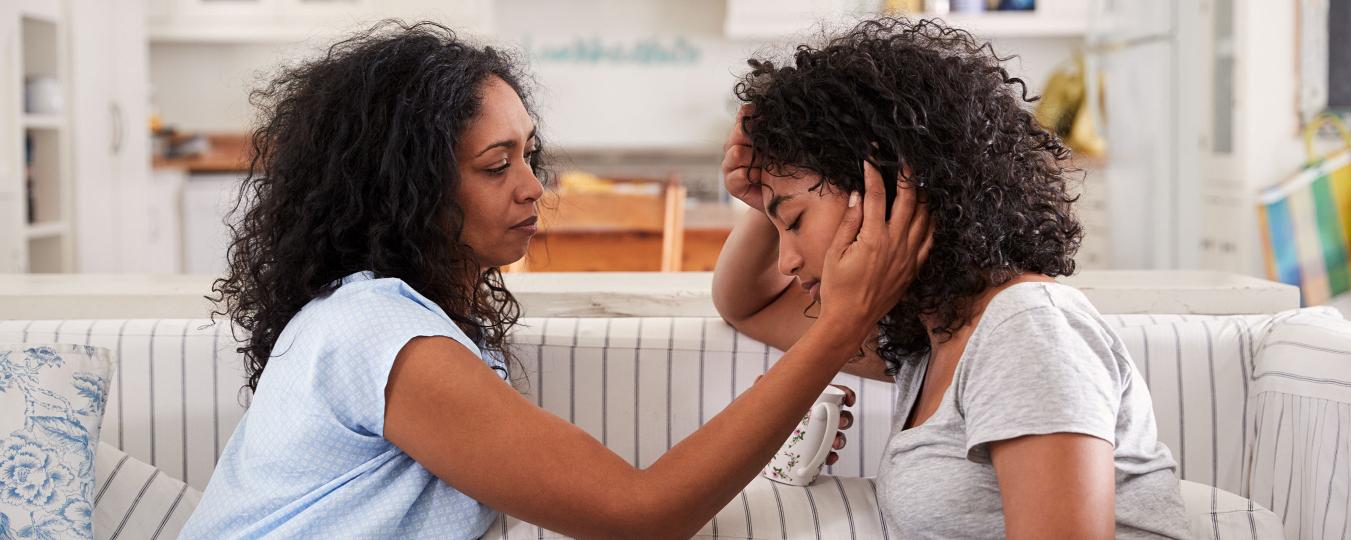Tips for Navigating the COVID-19 Crisis at Home with Teens, Young Adults
Compared to young children, teenagers and young adults living and learning at home during the COVID-19 crisis may be feeling the loss of social connections and life experiences while struggling to manage their time.
Ann Murphy, director of the Northeast & Caribbean Mental Health Technology Transfer Center (MHTTC) and an associate professor at Rutgers School of Health Professions, addresses how to navigate five key challenges.
How can parents cope with teens’ and young adults’ reactions to social distancing?
This age group tends to feel invincible, have a lower sense of vulnerability generally and specifically in relationship to the new coronavirus. They may not recognize the importance of social distancing. For them it is a time when socialization and connection with peers is especially important and without these connections teens and young adults can feel sad and lonely.
You can help them understand the importance of social distancing by sharing or exploring reliable sources of information from the Centers for Disease Control and Prevention. Take time to discuss things they can do to feel more connected to their peers through remote means. For younger teens, this may mean relaxing some of your restrictions on social media use. Explore new apps and tools that can facilitate group chats and video connection so they can stay connected to their peers. These may include House Party, Google Meet, Facetime and Skype. While you don’t want to encourage them to be on their electronic devices all the time, it is important to recognize the critical role of socialization and connection to peers.
How can families help to diffuse increased levels of stress at home due to social distancing and more time together?
It is best to start by trying to have compassion for yourself and everyone in the family during this high stress time. Make a plan for everyone to have some private time. Teen years are a time when young people distance themselves more from parental connections and move closer toward peer connections. This is a healthy process that continues through young adulthood. Have a conversation with your child about how you can respect their privacy and alone time while still having them respect the needs of the family as a whole. Engage them in the process of making a plan so everyone can have the space they need.
Instill or maintain healthy habits and establish a new routine, including eating a healthy diet, engaging in daily physical activity and getting adequate sleep. A change in the usual routine can further lend itself to staying awake late into the night and sleeping in. While some modification of their sleep schedule can be OK, try to negotiate a reasonable sleep schedule and stick to it, avoiding sleeping too much.
What strategies can young adults use to succeed in online instruction?
Work with them to establish a school routine. When will they begin their school day? When will they take breaks? Consider when and where they work best. Is it earlier in the day or later in the afternoon or evening? Do they get the most done alone in their room or at the kitchen table with others around? Try encouraging them to use a calendar, writing down when they will work on which assignments. Break down large assignments into smaller tasks. Create interim “due dates” so they can hold themselves accountable and not let the assignments pile up until right before the official due date. This is a wonderful skill to develop and one that can benefit them in the future. Consider establishing small rewards or incentives they can use for motivation when they accomplish tasks. Identify what these rewards could be.
What do I do if my teen or young adult is struggling emotionally with the COVID-19 crisis?
Reassure them that anxiety during a public health crisis is normal. It is also normal for teens and young adults who are missing out on finishing their college semester, going to prom, participating in their school’s theater production or sports competition, class trips and graduations to feel disappointed, sad, angry, frustrated. It is important not to minimize the impact of these losses. Encourage them to talk about their feelings and listen without judgement or minimizing the significance of this loss. They can also talk with their friends about planning alternative events after the crisis.
Other practices that can be helpful are mindfulness and meditation, deep breathing, physical exercise, keeping a gratitude journal and creating art. There are many apps that can help, in addition to gyms and other physical activity sites offering free exercise classes online.
If you are concerned your child is experiencing symptoms of a mental health condition such as anxiety, depression or suicidal thoughts and think they need help, contact one of these numbers: SAMHSA’s Disaster Distress Helpline (800-985-5990 or text Talk With Us to 66746), SAMHSA’s National Helpline (800-662-HELP) or the National Suicide Prevention Lifeline (800-273-TALK).
What alternative activities can I encourage my teen or young adult to participate in so they have some distractions from school work and social media?
Many museums, national parks, zoos and other places have virtually opened their doors so you can take a tour. Musicians are free live-streaming concerts. Teens and young adults can design online photo scrapbooks of friends or family, or can explore a new hobby on YouTube or Pinterest. College-bound students can take virtual tours of campuses and make lists of questions they want to ask when they’re able to visit in person.
by Bev McCarron
MEDIA CONTACT
Patti Verbanas
848-932-0551
[email protected]



